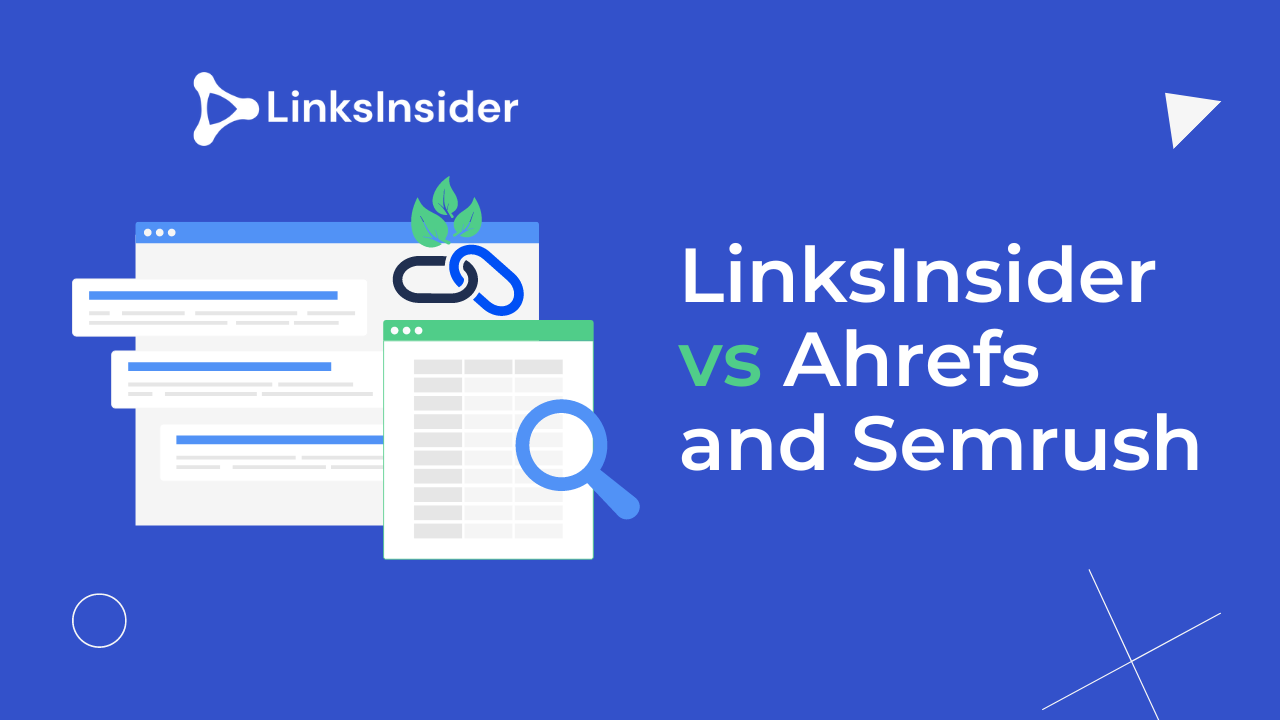Comparing LinksInsider, Ahrefs, and Semrush Backlink Analytics
Backlinks are a critical sign of digital credibility, impacting website search rankings, and hence increasing or decreasing its chances to be seen by potential customers. As businesses strive to harness the power of quality backlinks to gain better search visibility, they must attract more quality backlinks and make sure no spammy references harm their websites. This is where robust backlinks analysis tools come into play.
Choosing a backlink checker is a strategic decision, and it is not as easy as it might seem at first glance. In this quest, the depth of backlink data understanding makes a huge difference, which translates to the difference between making an efficient investment and falling prey to marketing tactics.
For example, in the SEO software industry, there’s an unfortunate tendency to use index volume as a marketing leverage and paint larger numbers as a competitive advantage. However, the index size alone does not give any insight into the quality of the data it contains.
While index size is a useful starting point, there are multiple factors to consider if you want to truly evaluate the credibility of backlink data the tools serve. These factors should include index freshness, backlink diversity, and authority metrics. Besides that, it’s essential to review how well each tool’s pricing aligns with the value it provides.
In this article, we’ve used this nuanced approach to provide you with a quantitative and qualitative comparison of the backlink analysis functionality in three cutting-edge tools: LinksInsider, Ahrefs, and Semrush.
Here’s a full roadmap of our exploration.
Contents
1. Getting to Know LinksInsider, Ahrefs, and Semrush
2. Index Size and Data Freshness in LinksInsider, Ahrefs, and Semrush
3. Backlink Data Reported by LinksInsider, Ahrefs, and Semrush
4. Diversity of Supported Backlink Types in LinksInsider, Ahrefs, and Semrush
5. Authority Measurement in LinksInsider, Ahrefs, and Semrush
6. Costs Considerations, Trial, and Support
Getting to Know LinksInsider, Ahrefs, and Semrush
What is LinksInsider?
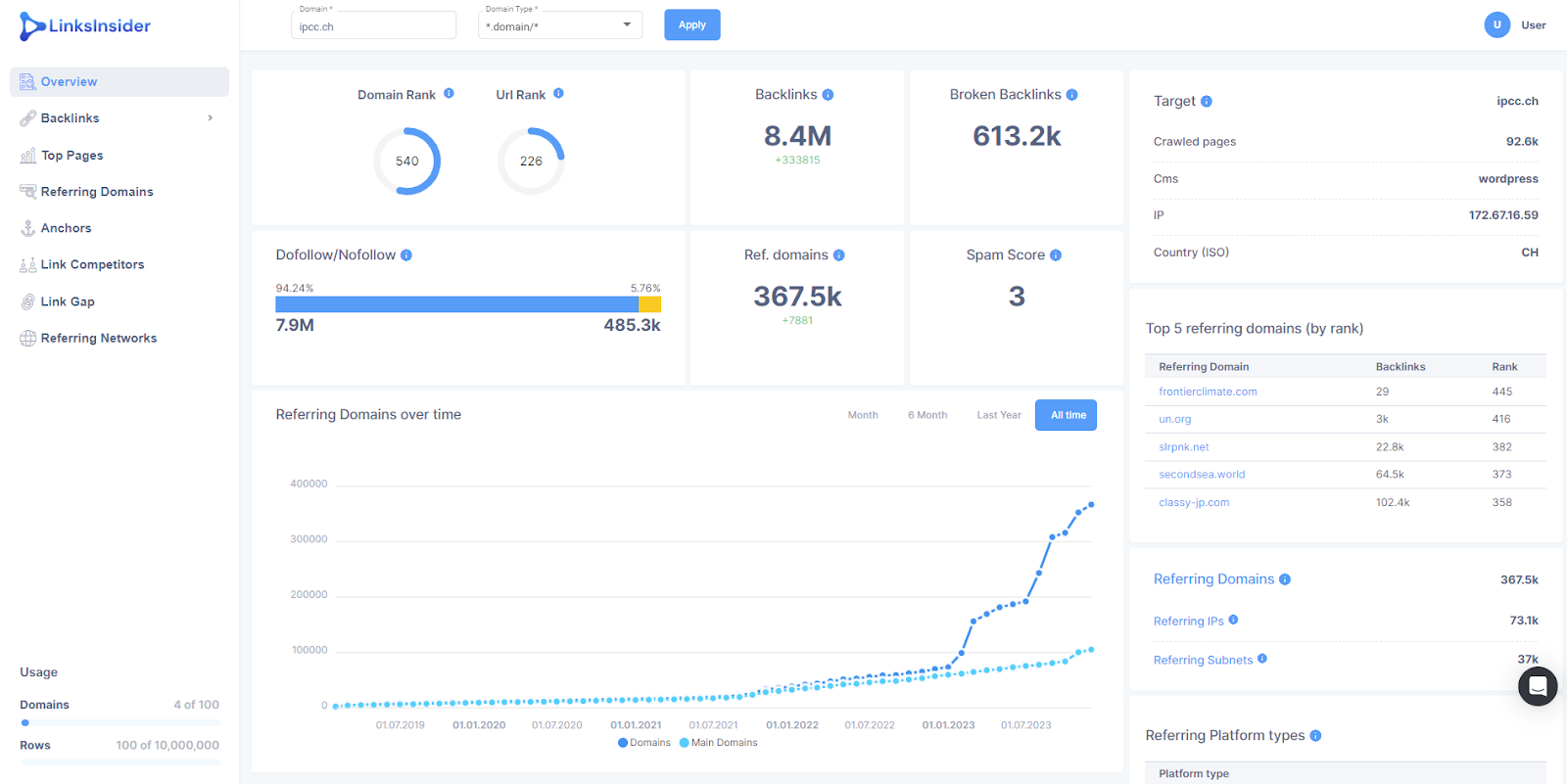
LinksInsider is a robust and intuitive app designed for tracking and analyzing backlinks. You can use it to gather real-time insights into your backlink profile, monitor the landscape of websites linking to your content, and analyze the strength of your backlinks. The tool offers multiple reports: Profile Overview, Backlinks Report, Top Pages, Referring Domains, Anchors, Link Competitors, Link Gap, and Referring Networks.
What is Ahrefs?
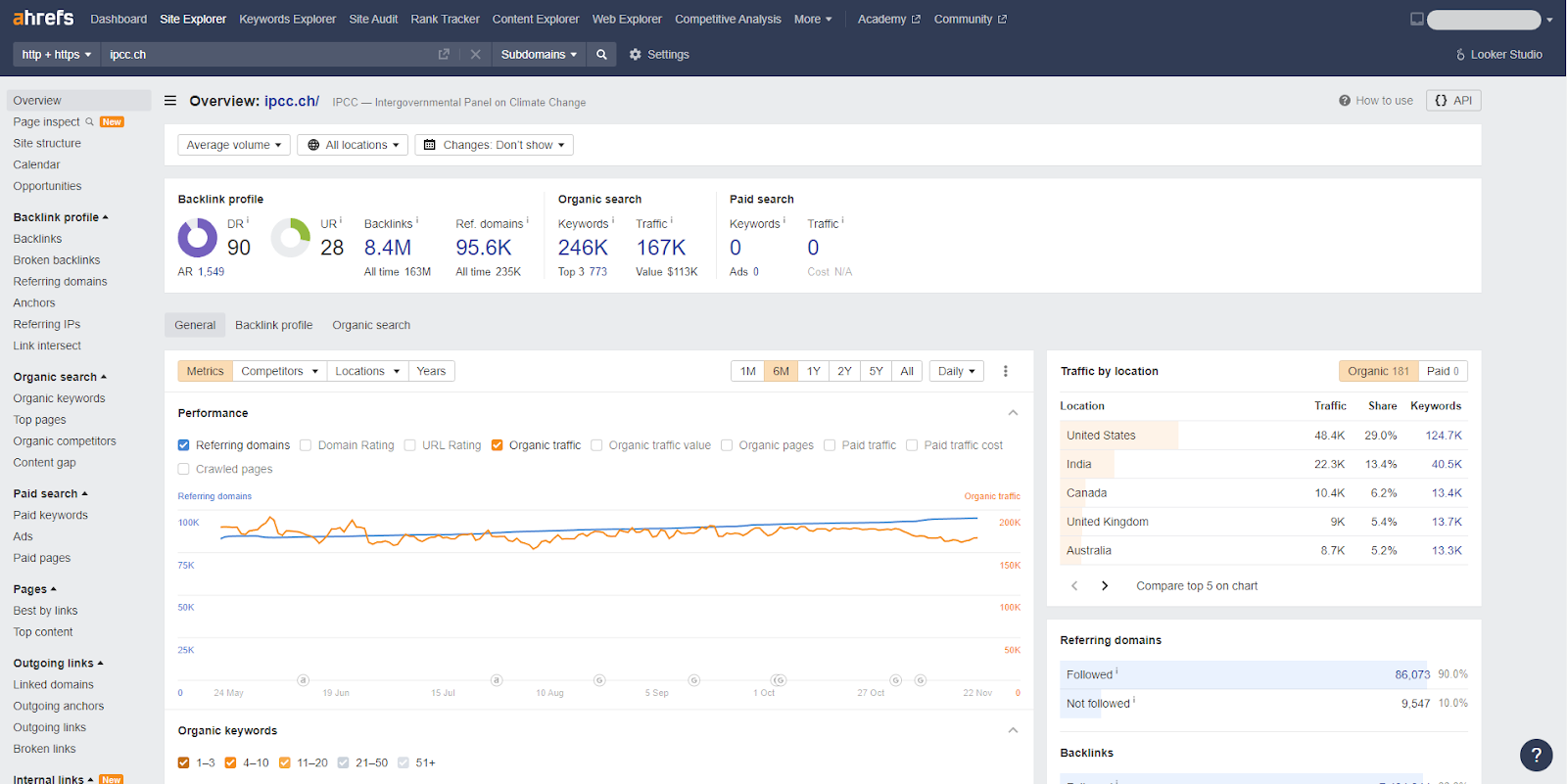
Ahrefs is a comprehensive SEO toolset for managing and improving your online visibility. It covers various aspects of digital marketing. Ahrefs’s key features include backlink analysis, keyword research, site audit, rank tracking, content analysis, and competitor insights. The backlink analysis functionality is incorporated into Ahrefs’s Site Explorer.
What is Semrush?
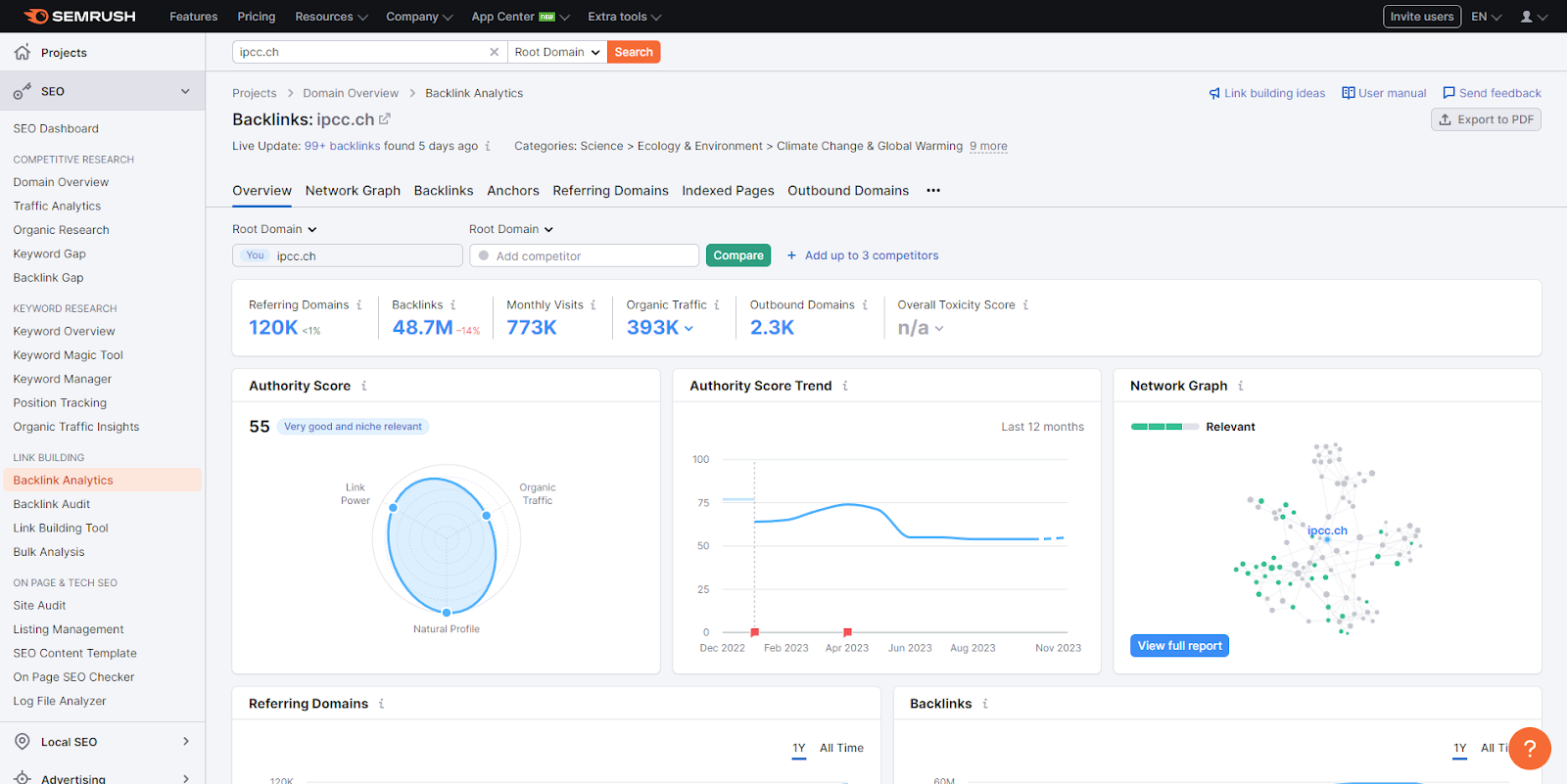
Semrush offers a marketing platform with a wide range of tools for SEO, PPC, content marketing, SMM, and competitive analysis. Similarly to Ahrefs, it provides keyword research features, site audit, and backlink analysis, adding advertising research functionality, social media management, and a content marketing toolkit on top. In Semrush, there’s a dedicated Link Building section, and a Backlink Gap feature separated into a Competitive Research section.
In the parts that follow, we will be concentrating on the comparison of backlink analysis features and backlink data quality offered by LinksInsider, Ahrefs, and Semrush.
Index Size and Data Freshness in LinksInsider, Ahrefs, and Semrush
SEO platforms employ unique approaches to calculate their index volumes which often makes the featured numbers incomparable. We will walk you through these approaches below, and will also provide you with the update frequency and historical data retention period of backlink databases used in LinksInsider, Ahrefs, and Semrush.
LinksInsider is built on top of the DataForSEO’s Backlink Index which encompasses 2.8T live backlinks, 334.7B indexed pages, and 196.6M domains. This calculation is based on data for live links only. However, DataForSEO’s index also stores lost backlinks (accessible for up to one year after being marked as lost), and if we sum up both live and lost types, the volume of the index powering LinksInsider amounts to 4T backlinks.
The index we’re using records only domains that have at least one backlink and automatically cleans backlinks that were removed over a year ago. Our data provider adds new backlinks to their database every second and we’re instantly making them available to you.
Ahrefs states their index stores historical data for 35T external backlinks and contains 345.2B pages and 210M domains. At the same time, they claim to have over 14 trillion links in the Live Index. However, it’s essential to understand the differences between the Historical, Recent, and Live Indexes, as they capture “live” and “lost” backlinks differently.
Ahrefs’s Recent Index captures “all “live” backlinks plus “lost” backlinks that had “live” status during the last 3-4 months” and the Live Index “contains “live” backlinks only.” The volume specifics of the Recent Index remains undefined.
Ahrefs’s Historical Index records backlinks “seen by Ahrefs crawlers as “live”, but not necessary live today” since May 2016.
The database in Ahrefs is updated every 15 minutes, and, their full database update takes about two months.
Semrush reports 43T backlinks offered in its “Fresh Index” based on the last 6 months of the data observed by their bot. They also indicate that their index contains 1.6B referring domains. However, this is significantly higher than an estimated total of 354M domain name registrations across all top-level domains as recently reported by Verisign (data for the end of Q1 2023). Accordingly, we should keep in mind that the numbers reported by Semrush should be considered with caution.
According to Semrush, their database is updated on an hourly basis. Lost backlinks remain visible in Semrush reports for a few months after the date they were identified as lost.
Considering all the details reviewed above, the comparison of sheer index sizes does not make much sense unless we take into account the tools’ methods for producing this metric.
Now that we’re done with the first step in our exploration – reviewing the index scopes – let’s dive deeper to compare the tools’ coverage. In the next part, we undertake our independent study based on comparable data from LinksInsider, Ahrefs, and Semrush.
Backlink Data Reported by LinksInsider, Ahrefs, and Semrush
Delving into the analysis of reported backlink statistics from LinksInsider, Ahrefs, and Semrush, we pursued a straightforward, yet challenging goal: evaluate the difference in the reported numbers while avoiding data inconsistencies across the tools. Given the unique approach we used, it is essential that you examine our methodology before jumping to the results.
Methodology
Analysis criteria: live backlink data for the root domain mode.
Date of analysis: November 25, 2023.
Comparison metric: number of live (active) backlinks considering one link per domain.
We chose this particular metric as it offers greater clarity compared to analyzing the default volume of backlinks. The thing is, each tool displays backlinks differently:
- LinksInsider counts unique backlinks from referring pages and displays the link with the highest rank, providing an option to see one backlink per referring domain or per anchor.
- Ahrefs lists multiple backlinks from the same page allowing to group similar links or see one backlink from each referring domain.
- Semrush also serves multiple backlinks from one page separately offering to group the results by one, two, or ten backlinks per referring domain. However, it is not possible to group backlinks from the same page.
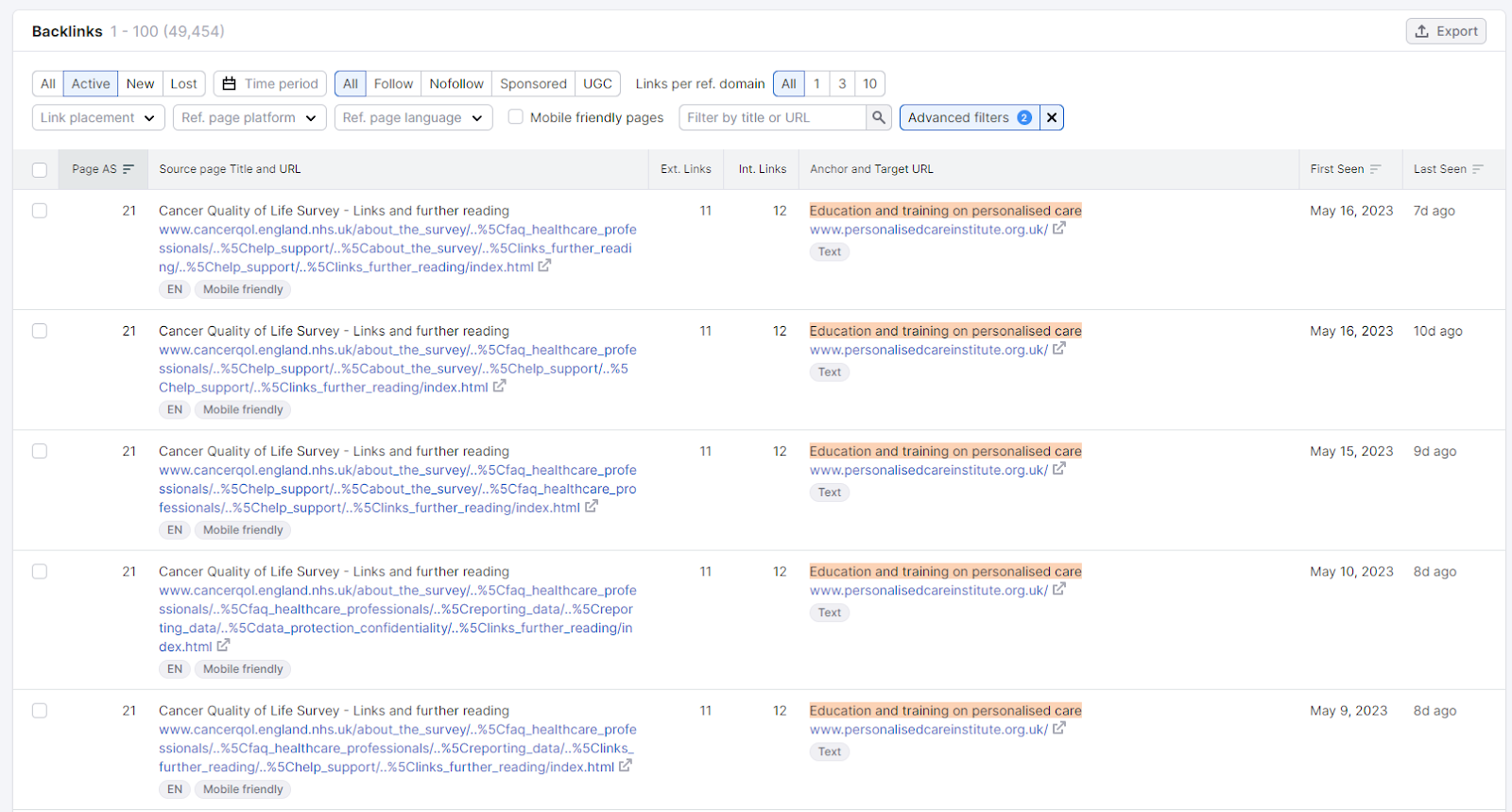
Dataset: the last 10 domains from Similarweb’s ranking of Most Visited Environmental Science Websites Worldwide, as of October 1, 2023.
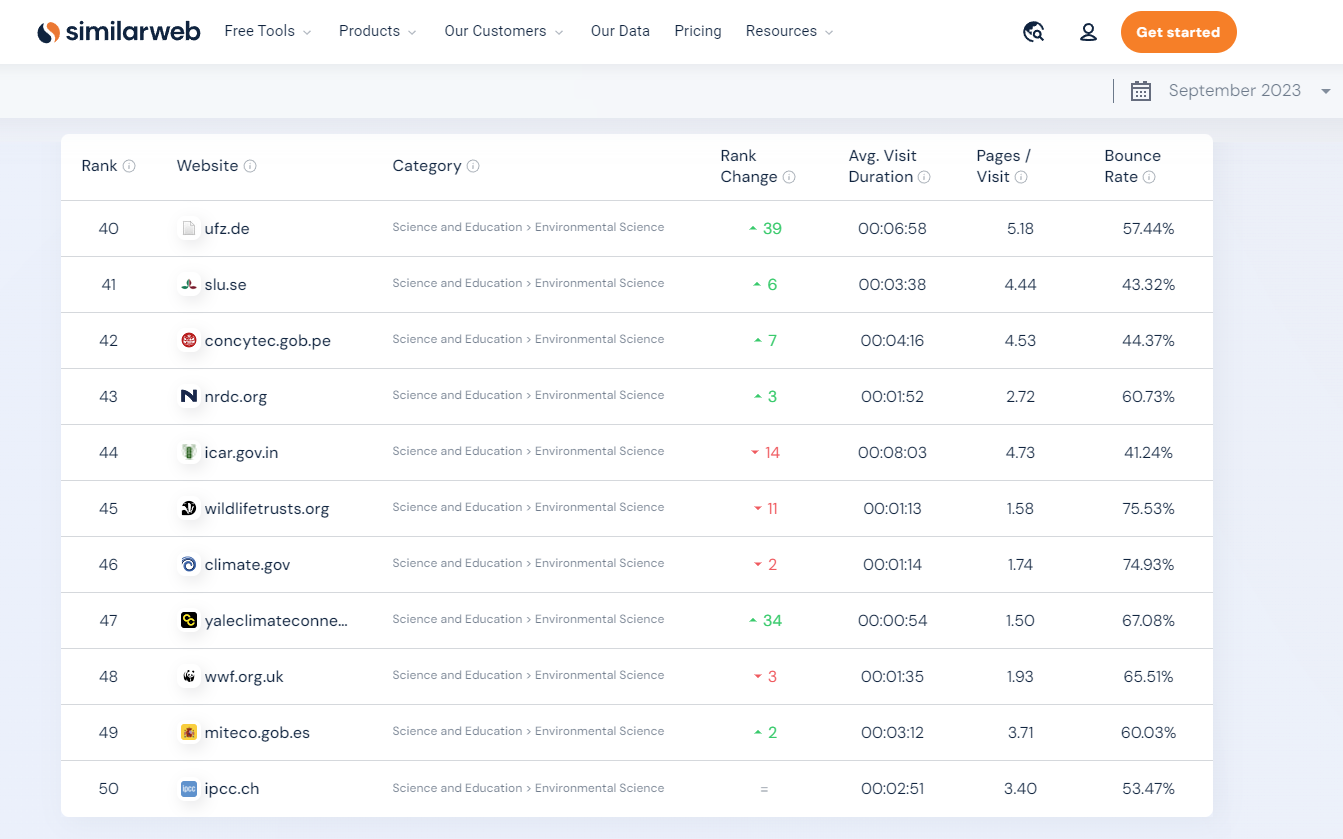
Limitations and challenges:
- Backlink crawling and indexing approaches vary among the analyzed tools. For instance, LinksInsider’s database does not record frame links, while Ahrefs and Semrush seem to miss out on meta-refresh links, which may result in different numbers across the tools. We’ll get back to this in the next section. Besides that, LinksInsider and Ahrefs are using internal filtering of low-quality and irrelevant domains and backlinks, while there is no such data about Semrush.
- The analyzed tools store live data for different timespans and use different timeframes to update their records. Accordingly, it is impossible to completely eliminate time-related disparities between the numbers the tools report.
Key findings
The main findings of our analysis are provided in the table below. It contains values as reported by LinksInsider, Ahrefs, and Semrush. The values correspond to the total amount of live groups of backlinks that point to the analyzed target domains, considering one link per unique referring domain.
| Target domains | LinksInsider | Ahrefs | Semrush |
|---|---|---|---|
| concytec.gob.pe | 3,934 | 3,900 | 4,996 |
| icar.gov.in | 5,510 | 6,033 | 8,324 |
| miteco.gob.es | 14,256 | 13,795 | 14,921 |
| yaleclimateconnections.org | 15,862 | 13,811 | 17,061 |
| slu.se | 15,898 | 16,792 | 19,236 |
| wildlifetrusts.org | 17,576 | 14,852 | 20,653 |
| wwf.org.uk | 29,395 | 26,506 | 32,620 |
| climate.gov | 31,376 | 27,542 | 32,205 |
| nrdc.org | 69,936 | 68,881 | 72,935 |
| ipcc.ch | 106,519 | 95,472 | 109,332 |
1 – the largest number of backlinks across the analyzed tools;
2 – the second largest number in a row.
Based on this data, we can determine that Semrush takes the lead displaying the highest numbers, with LinksInsider securing the second position, and Ahrefs closely behind. Examining the data more thoroughly, we can also notice that the initial difference in the reported backlinks is relatively small but gradually increases with higher figures, as illustrated in the chart below.
In conclusion, our analysis uncovers a fiercely competitive scenario where each tool offers robust coverage across the examined target domains. Keeping these findings in mind, we encourage you to consider more factors than a mere comparison of reported stats when evaluating your backlink analysis software options.
But before we review other essential criteria, don’t hesitate to conduct your own comparative analysis of the tools’ data using our guidelines below.
To repeat this research with LinksInsider, register and go to the Backlinks section. Enter your target domain selecting the domain with subdomains option. Click Apply. Then, under Mode, select One per domain, set Status Type to Live, and hit Apply once again. After this, the Backlinks Count will display the number of live backlinks coming from unique referring domains.
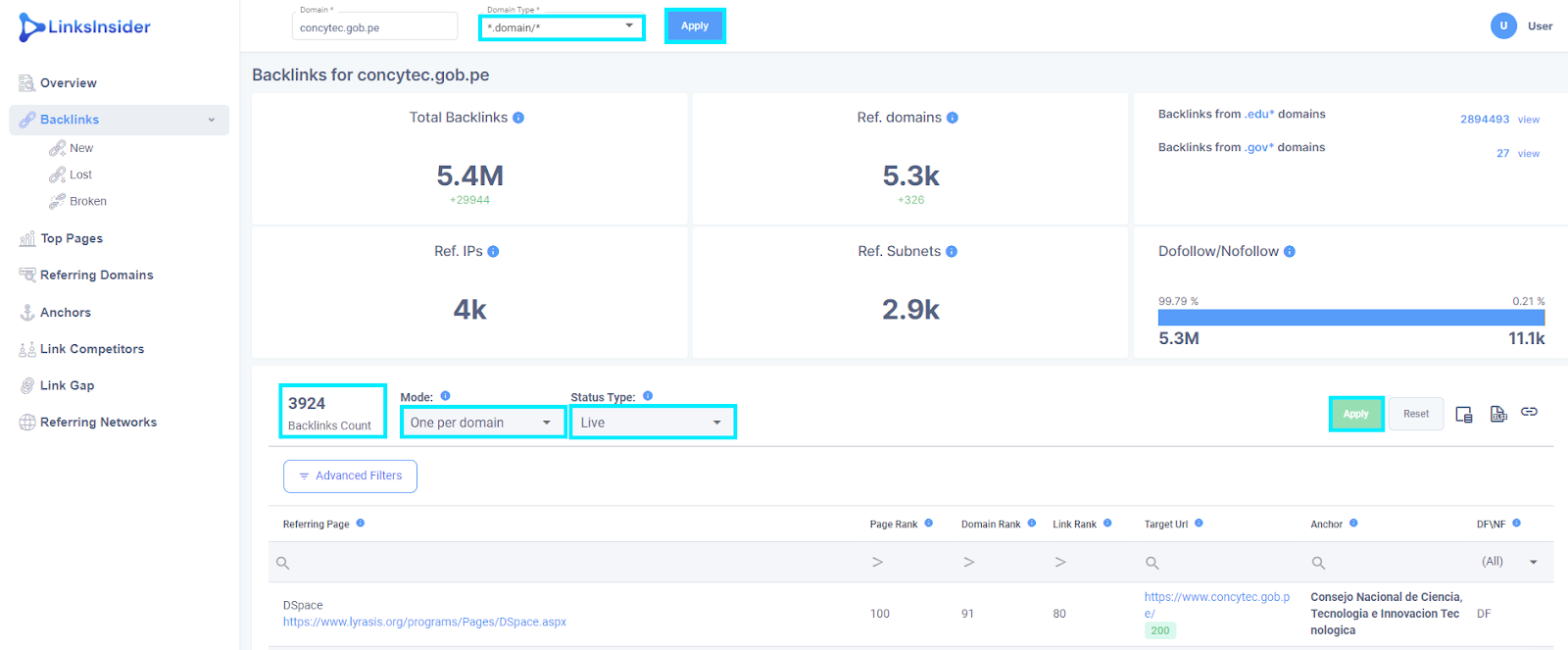
To repeat in Ahrefs, make sure you set the mode to subdomains, set the One link per domain filter, and choose the Don’t show option in the History filter to get live data.

To repeat in Semrush, choose the Root domain mode when specifying the target domain, then select an Active filter and set Links per ref. Domain to 1.
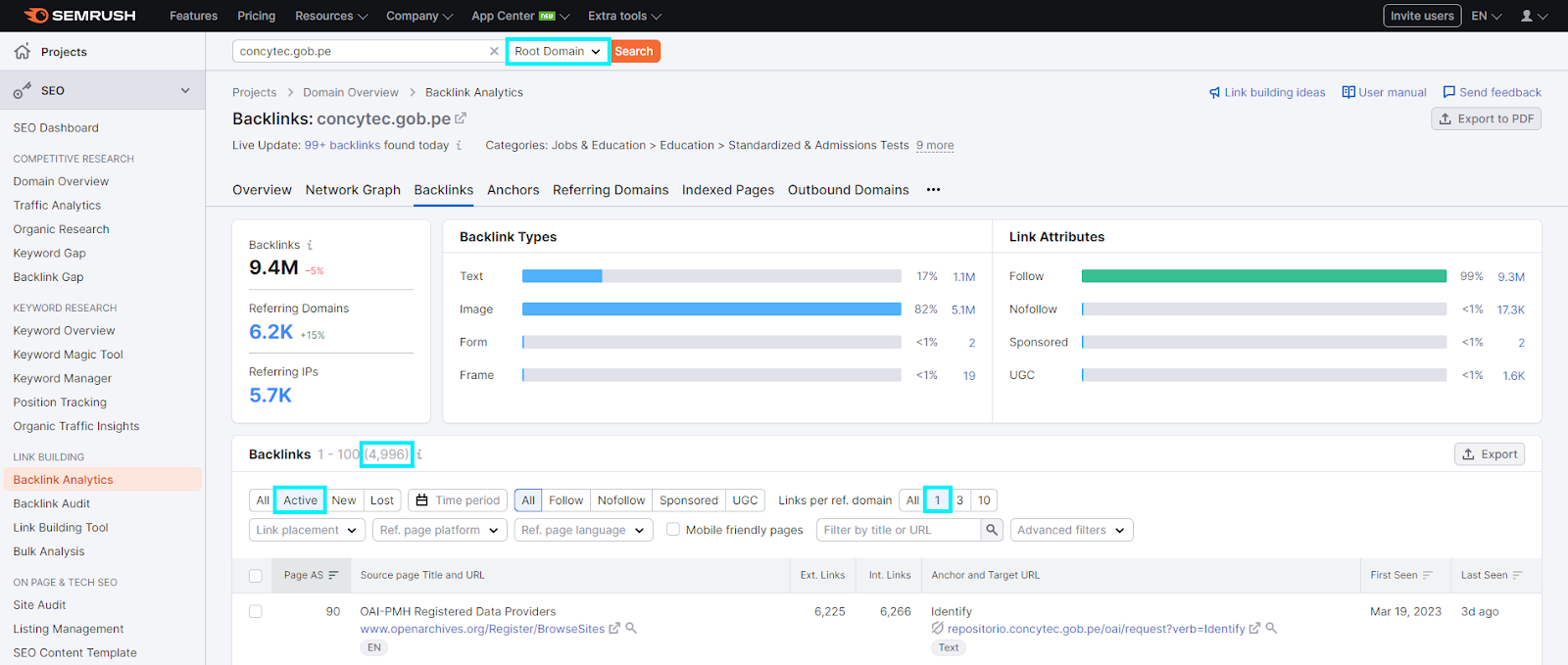
Diversity of Supported Backlink Types in LinksInsider, Ahrefs, and Semrush
First off, having the possibility to analyze diverse types of backlinks is vital for discerning links that pass authority signals to search engine bots from the ones that don’t. Basically, separating dofollow backlinks from nofollow ones is enough, and these two link types are supported by all platforms we are reviewing. However, there’s a broader link variety that may be needed for specific use cases. On top of that, larger support of link types ensures that more backlinks get captured by the index.
So, without further ado, let’s examine how LinksInsider, Ahrefs, and Semrush compare in terms of the link types their indexes cover.
| LinksInsider | Ahrefs | Semrush |
|---|---|---|
| anchor (text), redirect, – – canonical, alternate, – image, meta (meta refresh) |
text, redirect, frame, form, canonical, alternate, rss, image, – |
text, – frame form, – – – image – |
As you can see, Ahrefs serves the largest range of backlink types delivering the most profound detail. LinksInsider comes next, offering a solid link diversity and a unique meta refresh type not provided in other tools. Semrush comes last here, with the most limited number of supported backlink types.
Now that we know what types of links get into the index of each platform, let’s take a moment to find out how they measure the level of ‘link juice’ various resources may bring to your domain.
Authority Measurement in LinksInsider, Ahrefs, and Semrush
To distinguish between high-quality and low-quality backlinks, you should have easy-to-use instruments at your disposal. That is why we’ll now turn our attention to exploring authority metrics in LinksInsider, Ahrefs, and Semrush.
LinksInsider features three Rank values: Rank of a page (URL), domain, and backlink. Rank in LinksInsider represents a relative measure of a domain’s or webpage’s quality compared to every other domain or page in the database.

The Rank value is established based on the method for node ranking in a linked database, which was at the core of Google’s original PageRank algorithm. In simple terms, we calculate it based on:
- The number of inbound linking pages;
- The number of outbound links on each linking page;
- The Page Rank of each linking page;
- The damping factor – simulates the probability of a random user continuing to click on links as they browse the web (it is perceived to decrease with each link click).
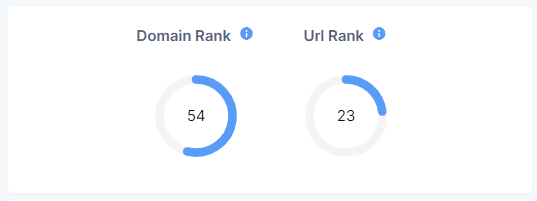
To produce the Domain Rank, we calculate the normalized sum of PRs of its indexed pages.
Rank values range from 0 to 100. The higher the value, the more authoritative the related domain or page is, or the more link juice the analyzed target gets from the related backlink.
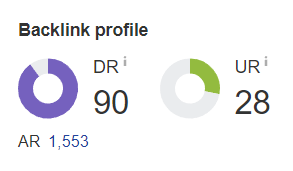
The value is based on “the total number of high-DR sites that link to you” as well as on “how many other websites these high-DR sites link to.” The URL Rating applies the same calculation approach to the page level.
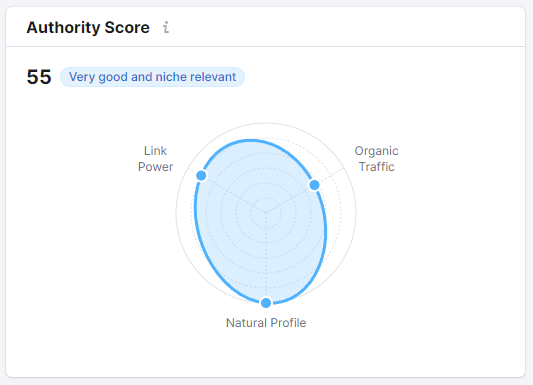
In a nutshell, each tool approaches the determination of authority in a unique way by employing a proprietary scoring system. LinksInsider, Ahrefs, and Semrush all empower users with robust features for evaluating the trustworthiness of backlinks, domains, and pages.
Costs Considerations, Trial, and Support
In the search for your ideal backlink checker, the last but not least important thing is to estimate the anticipated expenses. Given that each tool uses a distinct pricing strategy and limits, comparing the plans might be rather complicated. But worry not, we’ve got you covered.
In this part, we will dive into the available subscriptions, plan limits, and a few additional points to consider when choosing between LinksInsider, Ahrefs, and Semrush.
First, let’s break down the costs. Using the summary below, you can quickly compare available plans, and associated limits on the number of data rows you can explore per table of each report in the reviewed tools.
| LinksInsider | Ahrefs | Semrush |
|---|---|---|
| $19.99 (5,000 rows per table) |
$99 (2,500 rows per table) |
$129.95 (10,000 rows per table) |
| $49.99 (50,000 rows per table) |
$199 (30,000 rows per table) |
$249.95 (30,000 rows per table) |
| $79.99 (100,000 rows per table) |
$399 (75,000 rows per table) |
$499.95 (50,000 rows per table) |
| $999 (100,000 rows per table) |
Sources: pricing of LinksInsider, Ahrefs, Semrush
To summarize the insights we can obtain from this side-by-side view, LinksInsider emerges as the most budget-friendly backlink analytics option considering the volumes of data available in its plans. Ahrefs offers a more appealing starting price than Semrush, though, the amount of data you can get on the minimum plan is notably limited. In Semrush, the entry-level package provides four times more data than Ahrefs’s starting plan, yet it comes at a cost six times higher than a similar plan in LinksInsider.
But before committing to a subscription, it’s always advantageous to explore the tool’s features and make sure they fit your needs. So, now that we have sized the anticipated budgets, let’s explore two more essential aspects directly affecting your experience with the tools: the trial period and customer support.
| Criteria | LinksInsider | Ahrefs | Semrush |
|---|---|---|---|
| Trial period | 7 days | No free trial for platform access | 7 days |
| Customer support | 24/7 live chat | 24/5 live chat | Chat and phone during business hours |
The free trials in LinksInsider and Semrush equally allow users to benefit from the tools’ insights for 7 days. At the same time, if you encounter any issues, the customer support at Semrush may not always be there to help you out, while LinksInsider offers prompt round-the-clock assistance. Ahrefs provides customer support within an acceptable schedule but lacks a free trial, which presents a significant drawback.
Conclusion
To sum up, in this examination of LinksInsider, Ahrefs, and Semrush, we’ve uncovered that:
- Comparison of sheer index sizes does not make much sense as each tool uses distinct calculation methods.
- When comparing reported backlink statistics, Semrush takes the lead, with LinksInsider securing the second position, and Ahrefs closely behind.
- Ahrefs serves the largest range of backlink types. LinksInsider comes next, offering a solid link diversity and a unique meta refresh type not provided in other tools. Semrush serves the most limited support of backlink types.
- All tools offer robust features for evaluating the trustworthiness of backlinks, domains, and pages.
- LinksInsider emerges as the most budget-friendly backlink analytics option.
- The free trials in LinksInsider and Semrush equally allow users to benefit from the tools’ insights for 7 days, while Ahrefs lacks a free trial period.
- LinksInsider excels at offering prompt round-the-clock assistance. Ahrefs and Semrush offer a more limited support availability.
Sure enough, the final choice between the tools we explored depends on your specific needs. For example, Ahrefs and Semrush offer broad functionalities and thus are more suitable for a broader scope of digital marketing tasks. At the same time, if you are seeking an affordable and robust backlink analytics tool with rapid support, LinksInsider can be the perfect fit.
To examine the potential of LinksInsider or repeat our data comparison on your domains, don’t hesitate to register for a free trial.







